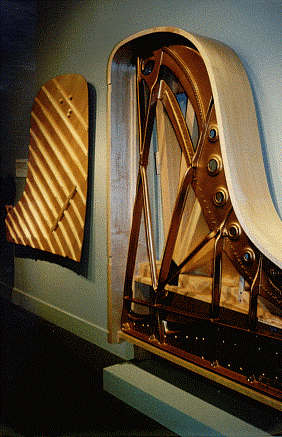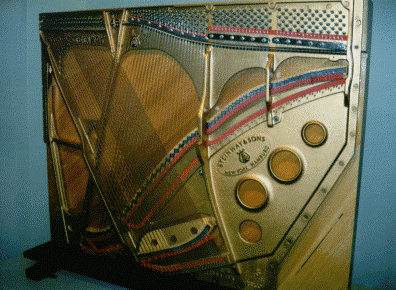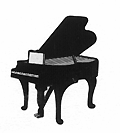Pianos are basically make of wood, felt, steel and iron.
The basic structure, comprised of the rim, soundboard, ribs and pinblock, is made of wood.
The plate is made of iron.

This photo shows a piano in its first stages of assembly, where only the structural parts have been put together. This picture was taken at the Smithsonian Institute Piano 300 Exhibit.
The photo to the right illustrates the additions of the tuning pins, which are driven into the pinblock, and the strings. The pins, along with the plate, anchor the strings to the instrument. The plate is cast iron, while the pins and strings are made of steel. When the piano is fully assembled and tuned, the structure of the piano must withstand approximately twenty tons of string tension.


The action is a removable internal unit connecting the parts which enable the hammers to hit the strings. It is made of thousands of pieces of wood, felt, springs, screws, and leather. Some of these action parts can be seen in the photo to the left (also taken at the Smithsonian Institute). A modern piano has eighty eight pieces of each action part, meaning that thousands of small parts are moving when a piano is being played.
The following photo is a close up of the action with its many thousands of parts already assembled
If the piano is to function properly and produce a lifetime of enjoyable music, the parts must be durable, they must have just the right amount of elasticity and they must be assembled with great care. While you own the piano, it must be tuned regularly and the action parts regulated and/or replaced every so often, to adjust for their inevitable compression and wear and tear over time.


While pianos are a universally loved instrument, they are also a very sophisticated instrument,
and you want to select one which will bring you many years of happiness, and then follow your technician’s recommendations for effective maintenance.
